Feeding Cows Profitably Means Feeding for Lifetime Yields
Analysis of UK dairy farm costings reveal a vast range of levels of performance, margins and profitability. The majority of dairy farmers who intend to generate acceptable long term reward for their effort and investment, will need to raise their game plan, and continue to lift milk output, increase productivity and improve the digestive efficiency of their cows through improved nutrition.
We at RWN, feel that the key determining factor which makes the difference between the below average, un-profitable dairy herd and the highly efficient, high yielding, healthy and profitable dairy farm at the forefront of the industry is: ATTENTION TO DETAIL.
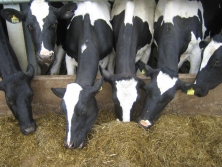 There is profit to be made out of dairying, but increasingly it will require attention to
detail, and forward planning. Healthy cows give more milk. Feed cows for rumen health and they will reward
you with high milk yields for many years with minimal problems. Feeding cows profitably means feeding
cows for lifetime yields, which means feeding for health and for fertility as well as simply pushing
for additional litres of milk.
There is profit to be made out of dairying, but increasingly it will require attention to
detail, and forward planning. Healthy cows give more milk. Feed cows for rumen health and they will reward
you with high milk yields for many years with minimal problems. Feeding cows profitably means feeding
cows for lifetime yields, which means feeding for health and for fertility as well as simply pushing
for additional litres of milk.
Here are our suggestions for achieving these aims:
Detailed observation of dairy cows by an experienced herdsman should take place on a daily basis. This is the most effective means of monitoring dry matter intakes and digestive efficiency.
Two areas of particular importance are: 1). Daily Observation of Cows
2). Careful Attention to Feeding
Together these have a major influence on cow performance and overall herd health
Daily Observation of Cows:
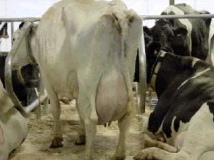 Body Condition: Excessive loss of body condition should be avoided at all cost. This is a sign of negative energy balance which can result from under feeding, poor dry matter intake, low energy density, poor utilisation of the diet, protein:energy imbalance, inadequate transition feeding, disease or mineral deficiency. Cows in negative energy balance will not get back in calf. Equally cows should not be allowed to become excessively fat. Overfeeding of concentrate feeds is both expensive and harmful.
Body Condition: Excessive loss of body condition should be avoided at all cost. This is a sign of negative energy balance which can result from under feeding, poor dry matter intake, low energy density, poor utilisation of the diet, protein:energy imbalance, inadequate transition feeding, disease or mineral deficiency. Cows in negative energy balance will not get back in calf. Equally cows should not be allowed to become excessively fat. Overfeeding of concentrate feeds is both expensive and harmful.
General appearance and environment: Most cows should either be eating or lying down cudding. Coats should be clean, sleek and shiny. Cows should be alert, interested and lively. They should be settled and look "right". They should not be flighty, nervous or easily spooked. Cubicles should be roomy, clean and comfortable. Water troughs should be clean and full at all times. Buildings should be light, airy and well ventilated.
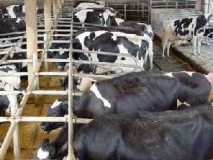 Rumen Fill: Assessing the level of rumen fill by observing cows from the left hand side gives an excellent visual indication of dry matter intakes. Rumen fill may be scored from 1 showing a hollow triangular area to 5 showing a full, distended rumen with maximum dry matter intake. Achieving high dry matter intakes is crucial to maximising production levels whilst safeguarding both cow body condition and fertility. Scoring dairy cows for Body Condition, Rumen Fill and Muck Consistency is now routine practice on many dairy units.
Rumen Fill: Assessing the level of rumen fill by observing cows from the left hand side gives an excellent visual indication of dry matter intakes. Rumen fill may be scored from 1 showing a hollow triangular area to 5 showing a full, distended rumen with maximum dry matter intake. Achieving high dry matter intakes is crucial to maximising production levels whilst safeguarding both cow body condition and fertility. Scoring dairy cows for Body Condition, Rumen Fill and Muck Consistency is now routine practice on many dairy units.
Cudding: Observe cows for cudding. Cudding indicates adequacy of long forage fibre fraction in the diet, rumen health, good rumen pH and a lack of acidosis. At least 60% of cows should be cudding at any one time. Where few cows are cudding, check for other indicators of sub acute rumen acidosis or SARA such as hyper-ventilation (rapid breathing), lame cows, cows paddling on their feet, scouring or loose muck, dirty backs caused by tale swishing, excessive body condition loss, low butterfat percentage, rough coats etc. Cud counting is a useful guide to assess the adequacy of structural fibre in the diet. Count the number of times cows chew each cud. 65 to 75 chews per cud is optimum. Where cud counts are below 60, rumen function can usually beimproved by adding more structural fibre to the diet.
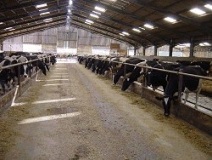 Muck consistency: Muck should be inspected with the foot and assessed for consistency. Consistency can be scored from 1, thin and watery and runs out of the cow like a tap, to a score of 5, stiff and hard containing a high proportion of fibre. Lactating cows should score 3 where a pad 2-3 cms thick is formed with a dimple
in the top and which does not stick or suck when the foot is removed. Muck should be deposited at the rate of a slow handclap.
Muck consistency: Muck should be inspected with the foot and assessed for consistency. Consistency can be scored from 1, thin and watery and runs out of the cow like a tap, to a score of 5, stiff and hard containing a high proportion of fibre. Lactating cows should score 3 where a pad 2-3 cms thick is formed with a dimple
in the top and which does not stick or suck when the foot is removed. Muck should be deposited at the rate of a slow handclap.
Muck digestibility: Samples of muck should be handled (use gloves) or sieved in running water. Ideally food particles should be completely digested resulting in a homogenous creamy consistency containing no undigested particles giving a score of 1. At the other end of the scale (score 3) we would see a high proportion of undigested material in the form of fibre, whole grain etc.
This indicates that a proportion of the diet is not being digested. This may be due to poor digestibility of forages used, maize silage, which often has very low fibre digestibility or mature grass silage. It may also be due to either a lack of degradable protein(ERDP) or fermentable energy especially in the form of sugars, or to rumen acidosis (low rumen pH). All these factors will result in reduced bacterial activity in the rumen, reduced dry matter intakes and incomplete digestion of the diet with implications for the cows overall energy balance. Most UK winter diets contain insufficient sugar for optimum rumen function.
Rumen Acidosis (SARA): Many UK diets have large excesses of fermentable starch and lack the levels of long structural fibre needed to promote cudding and to form a rumen mat or have excessive concentrate feed rates. The result is SARA or sub acute rumen acidosis. In dairy herds suffering from SARA, (also known as sub acute ruminal acidosis) at least 30% of cows will show a rumen pH below 5.7. This can be confirmed by sampling of rumen fluid by a vet.
Dung consistency will vary with most cows very loose and scouring whilst some will be stiff, firm and sticky. Cows will be dirty due to tail swishing. Dry matter intake will be poor due to impaired forage digestion, with a proportion of the diet undigested resulting in reduced feed efficiency. Cows will show excessive live weight loss, poor milk yields and poor milk quality. They will also go off feed with sudden milk loss and may drop cuds. SARA is also associated with poor fertility, increased incidence of digestive disorders, displaced abomasum, ketosis, mastitis, high cell counts. Whilst rumen acidosis can have dramatic effects on dairy herd health and on profitability, it often goes unnoticed.
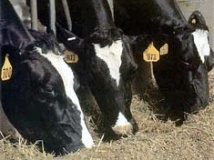 RWN Feeding Strategies: RWN have over several years developed a number of comprehensive long term strategies designed to improve levels of sugar provided from home grown forage, to improve the adequacy of long fibre in the diet and reduce acid load on the rumen. Lifting the levels of sugar in the diet invariably increases rate of digestion, efficiency of utilisation of degradable protein sources, dry matter intake and milk output. Look for high D-Value, high sugar grasses and maize varieties with high whole plant digestibility.
RWN Feeding Strategies: RWN have over several years developed a number of comprehensive long term strategies designed to improve levels of sugar provided from home grown forage, to improve the adequacy of long fibre in the diet and reduce acid load on the rumen. Lifting the levels of sugar in the diet invariably increases rate of digestion, efficiency of utilisation of degradable protein sources, dry matter intake and milk output. Look for high D-Value, high sugar grasses and maize varieties with high whole plant digestibility.
RWN work with a range of forage additives designed to preserve sugars in rapid wilted, high dry matter grass, wholecrop and maize silages. Having made optimum use of the home-grown forages and purchased bulk feeds, there are further opportunities to improve digestive efficiency.
Rumen buffers such as Ostrea Oyster Shell Flour or Acid Buf will directly lift rumen pH. Live yeast supplements will increase feed conversion efficiency by between 5% and 15%, at the same time as increasing DMI, improving protein utilisation, lifting rumen pH and increasing milk yield by around 1.5 litres per cow. Most important in avoiding metabolic and digestive disorders is nutrition and management during the transition period from dry to lactating diets. RWN use a wide range of products specially designed to ensure a productive and profitable lactation with minimal problems.
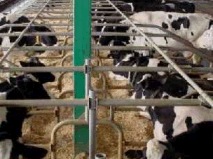 Feeding for Fertility: Fertility has become a major problem in dairying. Cows should be observed closely every day for bulling activity. Tail paints, paint sticks or Kamars are a valuable aid.
Feeding for Fertility: Fertility has become a major problem in dairying. Cows should be observed closely every day for bulling activity. Tail paints, paint sticks or Kamars are a valuable aid.
Poor fertility is not due to the Holstein breed nor is it due to producing higher milk yields. It is predominantly due to our reluctance or our inability to feed cows sufficiently well to meet their requirements. Consider feeding F1 Pallafat Elite and RWN Optomega-3, as part of your overall feed strategy.
Feeding for Profit: Feeding cows adequately is expensive and requires attention to detail, but the alternative is to accept reduced performance, poor fertility, metabolic disorders, unsatisfactory herd health, high culling rates and reduced profitability. It pays to feed well.
Adequate feeding is a very small price to pay for the massive benefits and greater profitability, which can result from feeding properly formulated diets as part of a long term feeding strategy resulting from a partnership approach between farmer, nutritionist and vet.
Good fertility starts with feeding in the previous lactation, through the dry period, the transition period and into lactation. Poor fertility will have severe consequences next year and beyond. Feed the cow for health, especially rumen health and yields will follow. Avoid negative energy balance. Monitor body condition score. Adopt a full transition-feeding program. Work closely with your nutritionist and your vet. Plan ahead and be prepared to feed what the diet requires.
Look after your cows and they'll look after you
Careful Attention to Feeding Cows:
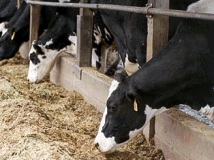 Feed Storage and Handling: For optimum dairy cow performance feed quality is paramount. Spoiled feed, especially where contaminated by mycotoxins can and do cause major problems for livestock. This applies to stored straights and compound feeds which have been exposed to moisture, as well as to moist feeds and conserved forage. Moist feeds should be well consolidated in clean, walled pits or clamps and in most cases will need to be consumed within 2 - 3 weeks.
Feed Storage and Handling: For optimum dairy cow performance feed quality is paramount. Spoiled feed, especially where contaminated by mycotoxins can and do cause major problems for livestock. This applies to stored straights and compound feeds which have been exposed to moisture, as well as to moist feeds and conserved forage. Moist feeds should be well consolidated in clean, walled pits or clamps and in most cases will need to be consumed within 2 - 3 weeks.
Grass silage and other ensiled forages should be treated with an effective silage additive, well rolled and consolidated and thoroughly sealed. Double sheeting and protection with netting or recycled lorry tarpaulins is always a good idea on outside pits. Clamps should never be filled to the extent that they cannot be properly rolled. Sand bagging along the shoulders is helpful. Always check the clamp face before feeding. A clean loading area and good face management are essential. Never, ever feed shoulder waste, visibly mouldy material or rotting slime layer material from silage clamps or moist feeds.
Mycotoxins dramatically reduce milk yields, cause abortion and infertility
Mycotoxins: Mycotoxins also compromise the immune status, are a frequent cause of mastitis and high somatic cell counts and result in increased disease susceptibility. If there is no option other than to feed silage, which is unstable, hot and mouldy, feeding a mycotoxin binder or deactivator such as Mycocell, MicroSafe Max or Mycosorb will greatly reduce the level of toxins absorbed from the feed. Every effort should be taken to prevent the situation recurring next season.
Routine feeding of spoiled, deteriorating feedstuffs can have a dramatic effect on cow performance, herd health and profitability. It can no longer be considered an acceptable practice. Spoilage can usually be dramatically reduced with a bit of forward planning. We are always happy to provide advice on an appropriate course of action.
Feeding the Cows: When filling the complete diet feeder, always follow the same loading sequence making sure that minerals and low inclusion supplements are fully incorporated into concentrates before adding the forage. When adding feeds ensure that feeds are weighed accurately. Mix for the minimum time necessary to create a uniform homogenous mix. Avoid over mixing, over chopping of forages or balling up of silages. Never add spoiled feeds to the mix.
Again attention to detail is, all-important. Remove left over feed from the feed fence before feeding. There should be a small amount of feed left in the order of 5%.
Observe the Cows Feeding: These are the sorts of questions you should be asking yourself:-
Do the cows eat the predicted amount? Do the cows sort the feed? Is it light, fluffy and homogenous with a pleasant appearance and a good nose? Is the forage fibre too long so that cows can sort it? Is there sufficient long fibre of 3 - 5cms, with sufficient scratch factor? Is the mix too wet and heavy? Is it too dry? Over 45% dry matter cows will tend to burrow into the mix and sort it removing most of the concentrates in a relatively short period of time, often resulting in rumen acidosis. Can the cows easily reach the feed throughout the day? Are they comfortable at the barrier? Have they enough room? Is the feed left towards the end of the day comparable to the mix that was fed at the start?
Dairy Feeding Strategies for Profit:
In order to increase profitability always focus on feeding to meet the cows requirements rather than feeding to least cost per litre
It is important to plan ahead and to take a long term, comprehensive approach to forage management and feeding. This approach should encompass rearing the calf, heifer rearing through to calving and continue on, through the cow's productive lifetime.
Our advice is to work closely with an experienced nutritionist together with your vet on an ongoing basis in planning your feeding strategies
At Richard Webster Nutrition we specialise in working closely with dairy farmers to increase their profitability, through improved nutrition using effective and comprehensive feeding solutions. In addition to providing detailed nutrition advice we supply a wide range of top quality, well researched and proven feeds, seeds, supplements, forage additives and other inputs at very competitive prices, designed to produce a total nutrition package for the progressive dairy farmer.
For more information contact Richard Webster
